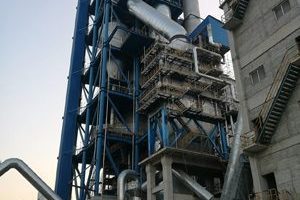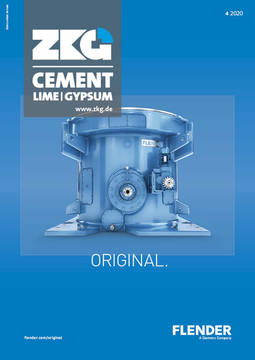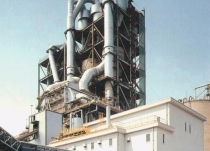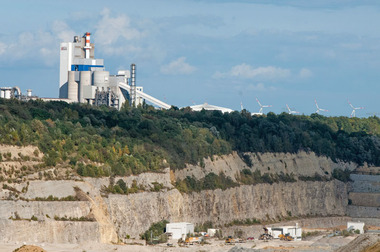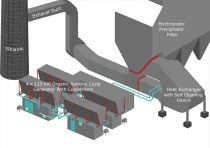Kawasaki receives order from Taiheiyo Cement for new-model cement plant waste heat recovery power generation system
Kawasaki Heavy Industries, Ltd. has announced its receipt of an order from the Taiheiyo Cement Corporation to supply a cement plant waste heat recovery power generation (WHRPG) system to their Saitama Plant. With an output of approximately 8 MW, the new system is scheduled to start operations in September 2022.
This WHRPG system will recover waste heat during the calcining stage of the cement production process and use it for power generation and energy-saving measures at the cement plant. It consists of a waste heat recovery boiler, steam turbine generator, and other components. Kawasaki will handle the overall plant design, equipment supply, installation and commissioning advisory services. A newly developed Vega® boiler will be adopted for the first time in Japan as the heat recovery steam generator.
Global company and industry leader Taiheiyo has been proactively introducing WHRPG systems at their plants in order to reduce CO2 emissions. The latest decision to introduce Kawasaki’s system was made after Taiheiyo’s careful and thorough-going consideration, based on the excellent performance and economic efficiency of the newly developed Vega boiler. With this adoption, Taiheiyo will complete the installation of WHRPG systems at all of their plants.
As worldwide interest in global warming prevention measures continues to rise, demand is expected to continue growing in both advanced and developing nations for facilities and systems that save energy and reduce environmental loads, including WHRPG systems for cement plants.
Since Kawasaki’s first delivery to the Taiheiyo Kumagaya Plant of a cement plant WHRPG system in 1982, the company has served as a global leader in this product category, providing WHRPG systems at approximately 260 plants worldwide. Together these generate about 2800 MW of electric power and cut CO2 emissions by about 12 million t/a. Kawasaki has also provided a diverse range of products that save energy and reduce CO2 emissions. Kawasaki will continue its active development and sales of products that lead to energy savings and reduction of CO2 emissions, and will contribute to preventing global warming.
Advantages of the Vega Boiler
Reduced weight through more compact design: Weight reduced by approximately 50 %, and required installation space by approximately 40 %, compared with conventional boilers
Shorter installation time: Use of module block design for heat transfer tubes reduces installation time by about 25 %
Reduced power consumption for induced draft fan: Boiler draft loss is decreased by about 75 % compared with conventional boilers, which leads to more energy savings by reducing power consumption for the induced draft fan
Excellent dust-removal performance: Adoption of a hammering system with high dust-removal performance contributes to improvements in heat transfer performance
Furthermore, it is designed to achieve stable heat recovery that is effective over the long term, even from alternative-fuel exhaust gases which contain large amounts of dust that adheres to heat transfer tubes easily.
//www.global.kawasaki.com" target="_blank" >www.global.kawasaki.com:www.global.kawasaki.com

